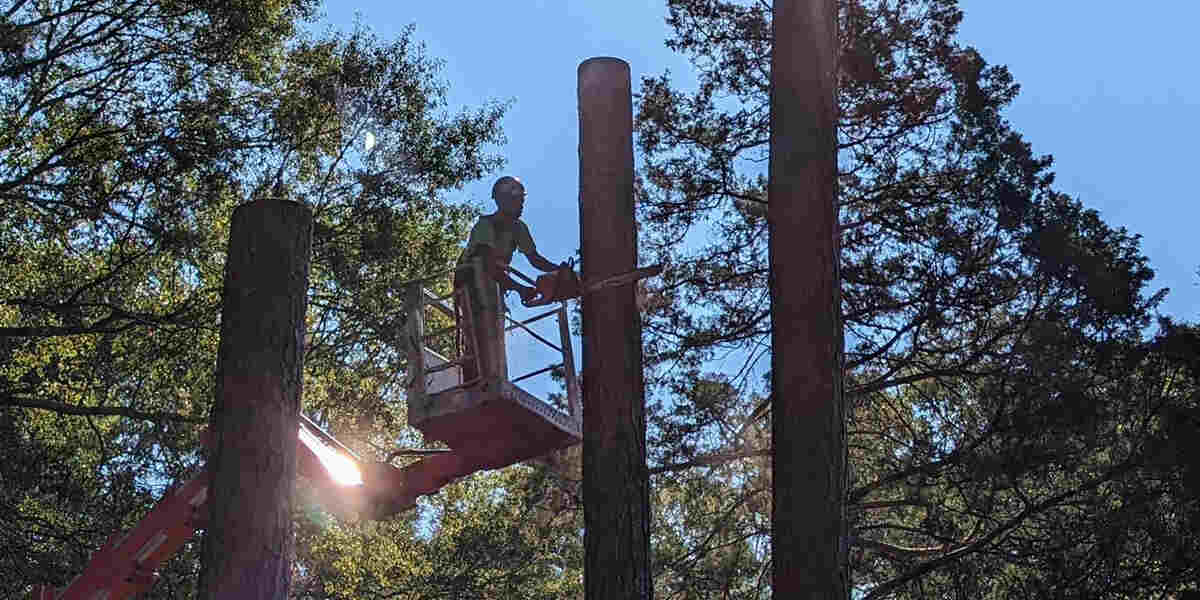Pruning tree branches proves essential for the tree’s health and longevity, but improper techniques can injure the tree. Products for sealing tree wounds exist that claim to help the tree heal and recover from the injury. Is adding a sealant to your tree necessary?
The experts at Barone’s Tree Pros, the leading Jackson tree service company, are here to explain the purpose of wound dressings and whether they’re necessary for trees to heal. Use the information in this guide to better care for your trees should they face injury due to incorrect pruning methods.

How Tree Sealants Work
When you get a cut and begin to bleed, your first instinct is to protect the skin by placing a bandage over the cut. The same logic applies to trees that face injury due to pruning cuts. Incorrect pruning techniques can make branches vulnerable to harmful tree diseases that could spread down the trunk and into the roots.
If you have a tree or shrub that’s starting to decay and you suspect it’s because of a disease, you may opt to remove the infected portion and dress the wound with a tree sealant. Experts recommend using sealants on trees at a higher risk for diseases, such as oak and elm trees.
Types of Tree Pruning Sealers Available
Various products exist for sealing tree wounds, each of which impacts the tree in different ways. Check out some of the most common types of sealants available for healing injured trees after pruning.
Oil-Based Sealers
Injured trees may deteriorate if pests infiltrate the affected branch. Applying an oil-based sealer to the area can prevent unwanted critters from feasting on the wounded tree. However, these products won’t be effective if your goal is to keep the branch full of sealed-in moisture.
Latex Sealants
Like an oil-based product, latex sealants prove effective at fending off pests and insects. Sealing tree wounds with latex provides more health benefits to the plant so it can recover faster.
Organic Products
Look for an all-natural product with ingredients like aloe gel and collagen rather than harsh chemicals. Putting an organic sealant over a tree wound facilitates healing and provides the tree nutritional value as well.
When To Seal Tree Wounds
While trees can decay due to diseases or pest infestations, they show resilience in overcoming drought, pruning injuries, and other health issues. Placing sealant over cut branches can have negative effects on tree health, including:
- Excess moisture within the tree that leads to fungal growth
- Wood rot
- Exposure to harmful chemicals or ingredients
Most trees heal themselves over time as callus tissue grows over the injured area to isolate it and prevent widespread decay. As long as tree service crews deploy the proper pruning technique, sealing tree wounds won’t be necessary.
Experts may recommend otherwise if they identify a tree with other health and safety risks or prune a disease-prone tree during periods with high infection rates. For example, you should schedule a pruning service for oak trees during the winter since oak wilt doesn’t spread at that time. If you must prune the tree during the spring or summer months, apply a sealant to protect the wound to prevent the tree from catching the disease.
Contact Barone’s Tree Pros for Tree Services in Jackson, MS
How will overwatered trees recover from the excess moisture? When is sealing tree wounds beneficial for tree health? What are common signs of tree decay?
The skilled professionals at Barone’s Tree Pros can answer these questions and more. Contact us whenever you have a pressing issue impacting your trees and you need a trustworthy crew to boost tree health and safety. Submit our online contact form or call (601) 345-8090 to request a quote.